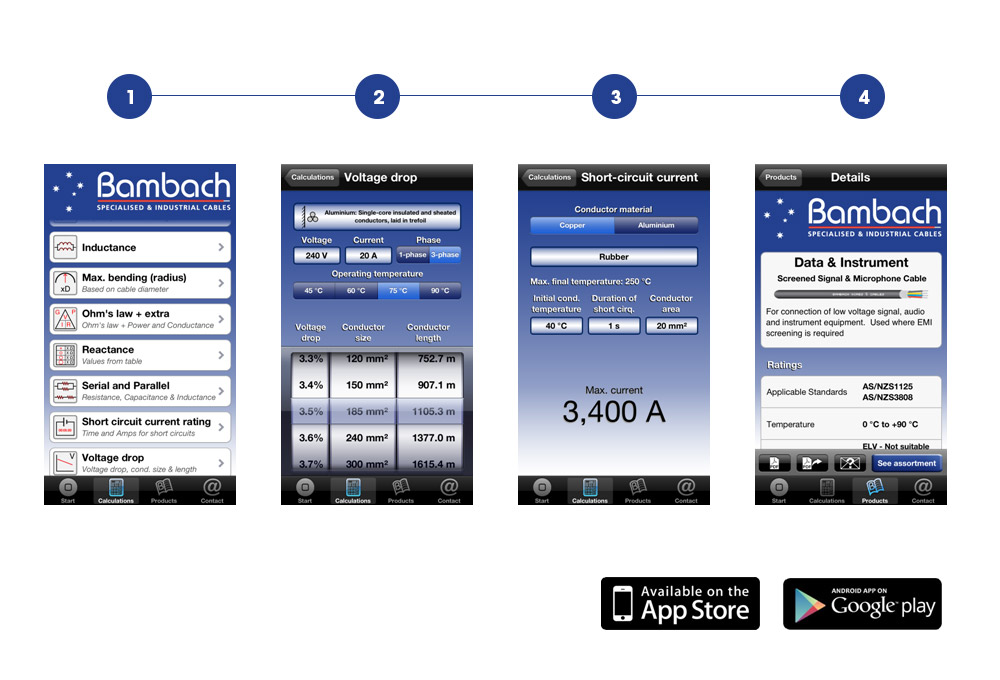We use cable every day in our lives more than you may realise. It carries power to our computers and phones, helps kick start our cars in the mornings and of course lights up our homes. If there is a disruption in the supply of power or signals it can be inconvenient or dangerous.

Conductor Centre
It is a requirement to have a minimum radial thickness of insulation and sheath on the conductor or cable. The amount required is governed by various factors such as insulation type and voltage. If the conductor is off centre, the insulation thickness may be below the minimum threshold. If the insulation thickness is too thin, it can break down during operation and cause a fault or arc. For instrumentation and signal cable, an off centre conductor will increase unbalanced capacitance and degrade signal quality. The same principle applies to the sheath thickness.
To apply a quick check, square cut a cable length and inspect the cable. If the insulation and sheath looks fairly evenly distributed around the conductor or cable, then it should be ok. If there is a noticeably thin and thick section, there could be an issue.
Conductor Area
Conductor area is important to carry the minimum continuous current and provide suitable maximum voltage drop. The associated conductor size for current ratings and voltage drops can be found in AS3008.1.1. If there are a few strands missing from the conductor, this will reduce the CSA (conductor surface area) and increase resistance. If a 2.5mm² conductor carries the same continuous current with reduced CSA, it will be operating at a higher temperature. If the cable is carrying the maximum prescribed current, then the temperature will be higher than the rating of the insulation. If this is the case, the insulation will degrade quicker and could actually melt away, exposing the conductors.
Reduced CSA’s also have an effect on the voltage drop and power consumption. The voltage drop is proportional to the resistance, so a 2.5mm² carrying 20A at 240V has a voltage drop of 5% at 33.3m. If the conductor resistance is increased by 10%, the voltage drop at 33.3m will be 5.5%. As the voltage drop is higher, there will be less voltage at the load and therefore less power i.e. it will take longer to boil the kettle.There are 2 ways to check that the conductor is the right size. Firstly count the number of wire strands in the conductor. Then measure the diameter of the wire using a vernier or micrometer. You can apply the formula to calculate the conductor area.
CSA = πr² * No. of Wires
The number of strands and diameter can also be checked against the products data sheet.The second method that can be done is to measure the conductor resistance using a multimeter. The total resistance will need to be divided by the cable length to get a per metre value. This value can be checked against maximum values found in AS/NZS1125
Insulation Resistance and Core Continuity
Conductors are insulated so that they can be protected from each other. There can be faults when there are fluctuations or holes in the insulation. If the cable has a shield or braid, it is more likely that there will be continuity between the braid and core rather than core and core. It is also important that the cores and shield have continuous continuity through out the run. Cable can be supplied with joins buried in the reel. Cable continuity can is an issue where the join only becomes obvious after the cable has been reeled off the drum,
To check that there is no continuity between the cores and shield, use a Megger Resistance Tester to check the resistance value. The test can be carried out in various ways such as core-core, core – all cores or core – screen. The longer the length of cable, the lower the resistance value will be. Different insulation materials will also have different dielectric strengths. As a guide, the resistance value should be in the 10’s of MΩ to GΩ. Continuity of cores can be checked using the Megger Resistance Tester or a multimeter. In this instance, the desired resistance value is low. Once again the value found is length dependant. As a guide, if the resistance value is in the MΩ, there will probably be an issue.
General Feel and Appearance
There is measuring and testing that can be done on cable to determine its quality but a simple general inspection is all that could be needed. Cables are generally intended to be round however they can end up ropey, snakey and odd shaped. An un-round cable could cause issues when terminating through a gland. The material can be checked by the general feel of the cable. By rubbing or cutting the material, it can give indication of the quality. For example, poor quality silicone is very soft and when rubbed, it wears away. Like anything you buy, you can get a good sense of the quality just by having it in your hands.

















